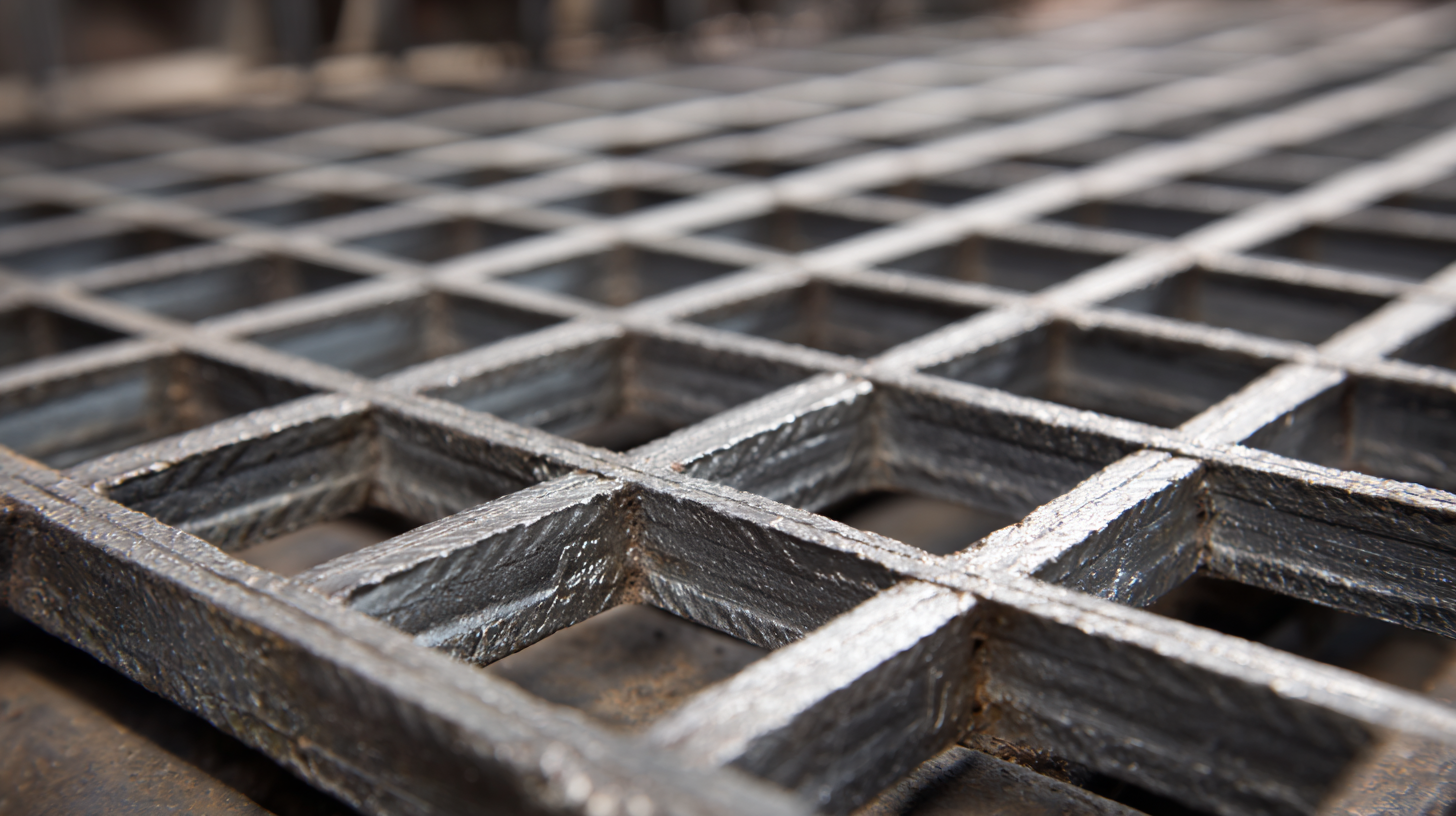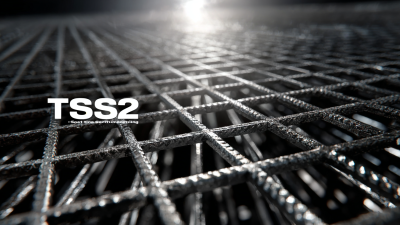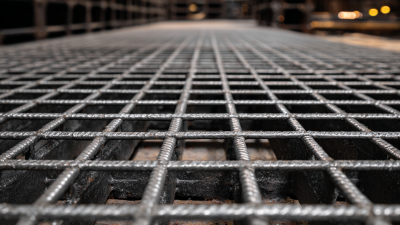When selecting the appropriate Bar Steel Grating for industrial applications, understanding load capacity standards is essential. The selection process can significantly impact the safety and efficiency of operations across various sectors, including construction, manufacturing, and energy. According to a recent industry report by the Amercian Institute of Steel Construction, approximately 70% of industrial facilities rely on properly designed grating systems to support heavy machinery and pedestrian traffic. Choosing the right Bar Steel Grating not only ensures compliance with relevant safety regulations but also optimizes performance based on specific load requirements. With load capacity specifications varying widely—often categorized from light-duty to heavy-duty applications—it’s crucial for decision-makers to assess their facility’s unique demands carefully. This guide will navigate through the critical factors to consider, thereby helping professionals make informed decisions tailored to their industrial needs.

Understanding load capacity standards for bar steel grating is essential for ensuring safety and efficiency in industrial applications. Load capacity standards specify the maximum weight that grating can safely support without deformation or failure. These standards vary depending on the material and design of the grating, typically classified into heavy duty, medium duty, and light duty categories. When choosing bar steel grating, it’s crucial to consider not only the expected load but also dynamic factors, such as impact and vibration, that could affect the performance of the grating over time.
Additionally, compliance with recognized load capacity standards helps in the selection process. For example, the American National Standards Institute (ANSI) and the American Society for Testing and Materials (ASTM) provide guidelines that define how grating should be tested and rated for load-bearing capacity. By adhering to these standards, you can ensure that your selected grating will perform adequately in your specific industrial setting, whether it’s for flooring, walkways, or platforms, ultimately enhancing both the safety and longevity of the installations.
When selecting bar steel grating for industrial applications, understanding the various types and their respective load capacities is essential. Typically, bar steel gratings are categorized into three main types: heavy-duty, light-duty, and medium-duty.
 Heavy-duty gratings, often constructed from thicker bars with heightened spacing, can support substantial loads, with a capacity of over 1,000 pounds per square foot, making them suitable for high-traffic areas in manufacturing facilities and warehouses. According to a report from the American Institute of Steel Construction (AISC), using heavy-duty grating can improve overall safety and efficiency in environments where heavy machinery operates.
Heavy-duty gratings, often constructed from thicker bars with heightened spacing, can support substantial loads, with a capacity of over 1,000 pounds per square foot, making them suitable for high-traffic areas in manufacturing facilities and warehouses. According to a report from the American Institute of Steel Construction (AISC), using heavy-duty grating can improve overall safety and efficiency in environments where heavy machinery operates.
On the other hand, light-duty and medium-duty gratings are designed for lighter applications, such as walkways or platforms. Light-duty options generally support loads ranging from 250 to 500 pounds per square foot, whereas medium-duty gratings can handle loads between 500 to 750 pounds per square foot. The choice between these types hinges not only on the anticipated load but also on additional factors like spacing, material type, and environmental conditions. Reports from the National Association of Architectural Metal Manufacturers (NAAMM) indicate that selecting the right grating can lead to enhanced durability and reduced maintenance costs in the long run.
When selecting bar steel grating for industrial applications, there are several key factors to consider that can significantly impact performance and safety. One of the most important elements is the load capacity standards, which determine how much weight the grating can support without bending or breaking. It’s essential to choose steel grating that meets the specific load requirements of the intended use, whether it's for pedestrian walkways, platforms, or heavy machinery. Various load classes are outlined in industry standards, aiding decision-making based on the expected foot or vehicle traffic.

Additionally, the type of material and surface finish plays a crucial role in the durability and maintenance of bar steel grating. While steel is commonly used for its strength, options like aluminum may be suitable for environments prone to corrosion. Surface treatments, such as anti-slip coatings, enhance safety by providing better traction. Understanding the specific environmental conditions, including exposure to chemicals or moisture, will further guide the selection process to ensure longevity and reliability of the grating in any industrial setting.
When selecting the best bar steel grating for industrial applications, understanding the material options available is crucial. Steel grating, known for its strength and durability, is often the go-to choice for heavy-duty applications. Its ability to withstand high loads and harsh environments makes it suitable for industrial flooring, walkways, and platforms. Additionally, steel grating can be coated to enhance its resistance to corrosion, extending its lifespan even further.
On the other hand, aluminum grating is a lightweight alternative that offers excellent corrosion resistance, making it ideal for industries exposed to moisture or chemicals. While it may not handle as much weight as steel, aluminum grating provides a good strength-to-weight ratio, making it easier to install and maintain. Lastly, fiber reinforced grating presents an innovative option, combining durability with a non-conductive property. This makes it an attractive choice for settings where electrical insulation is paramount. Each material has its advantages, and the choice should be guided by specific load capacity requirements and environmental factors.
When selecting bar steel grating for industrial use, understanding the relationship between load capacity and performance is crucial for maintenance and longevity. Load capacity standards dictate the maximum weight the grating can support, affecting its durability and operational lifespan. Choosing the right load capacity ensures that the grating can withstand the demands of heavy machinery and foot traffic without succumbing to wear and tear. Regular assessments of the grating's condition in accordance with these standards can prevent premature failure, saving both time and resources in repairs and replacements.
Furthermore, the implications of load capacity extend beyond immediate performance to long-term reliability. High-quality bar steel grating designed to meet or exceed load capacity requirements not only enhances safety but also minimizes maintenance needs. Over time, grating that operates within its load limits demonstrates improved durability, reducing the frequency of inspections and repairs. This proactive approach fosters a sustainable industrial environment where efficiency is maximized while minimizing disruptions caused by equipment failure.
Adopting the best practices in grating selection based on load capacity standards ultimately results in a more resilient infrastructure.





